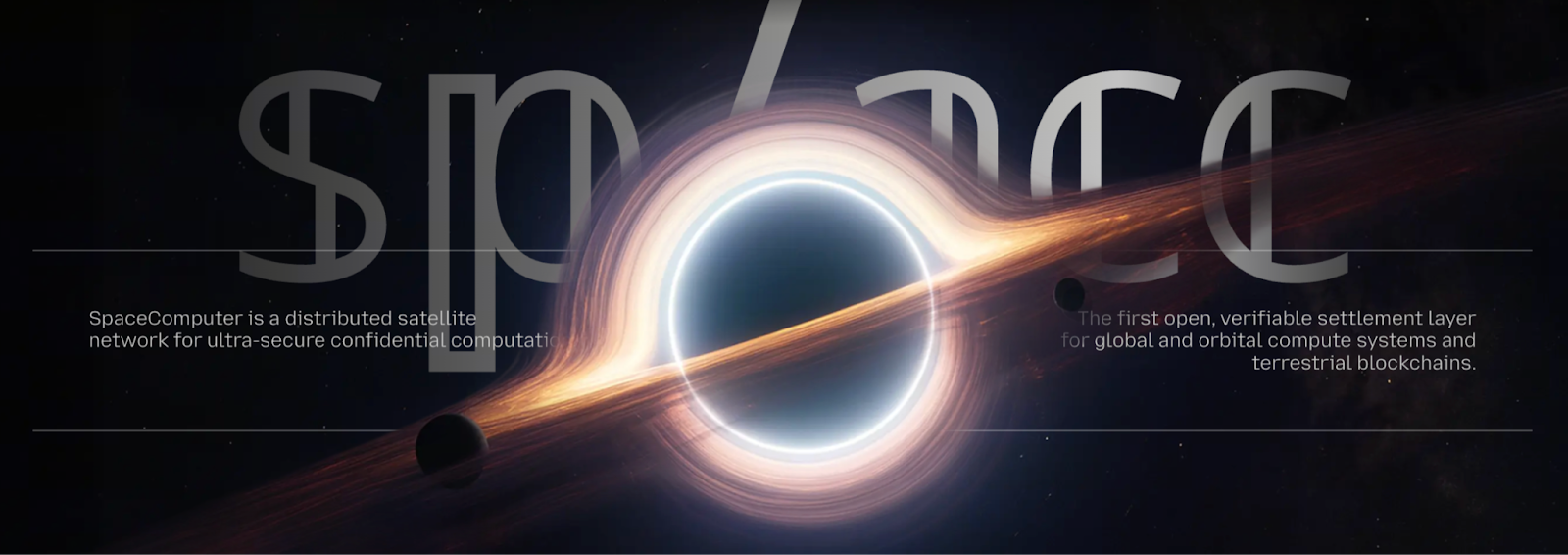SpaceComputer Raises 10M to Build Space Based Blockchain Infrastructure
SpaceComputer: Pioneering Space-Based Computing Power

(Source: SpaceComputer)
SpaceComputer, a startup, has secured $10 million in seed funding. It plans to deploy its own satellites to create the first secure network capable of executing blockchain and cryptographic computations in space. The project aims to build a highly secure computing system that operates independently of terrestrial infrastructure. This allows on-chain operations to run free from ground-based interference.
Robust Investor Participation
Maven11 and Lattice co-led the round, with additional support from Superscrypt, Arbitrum Foundation, Nascent, Offchain Labs, Hashkey, and Chorus One. Prominent figures in the crypto and tech sectors, including Marc Weinstein, Jason Yanowitz, and Ameen Soleimani, also participated as individual investors. Primitive Ventures led the pre-seed round, which highlights strong investor confidence in this emerging sector.
Developing SpaceTEE Satellites
The new capital will be used to manufacture, deploy, and test the company’s first satellites, known as SpaceTEE (Trusted Execution Environment). Key functions include:
- Processing blockchain cryptographic tasks in space
- Delivering high-security, distributed computing nodes
- Handling sensitive operations, including identity verification and maintaining records
- Building a comprehensive space-based computing network
SpaceComputer is developing network management software that coordinates operations among multiple satellites, and supports new services, including confidential computing and secure data storage.
Major Financial Institutions Explore Blockchain in Space
SpaceComputer is not alone in its interest in space-based computing. JPMorgan, a leading financial institution, previously conducted the world’s first blockchain-based transaction in space, leveraging a blockchain network on low Earth orbit (LEO) satellites to execute smart contracts. Such initiatives demonstrate the practical application of space-based blockchain technology.
Challenges and Risks in the Space Environment
Space infrastructure faces several mounting challenges, including:
- Rapid growth of space debris: In 2023, the FAA warned that the reentry of LEO satellites poses risks to ground safety.
- Satellite interference with astronomy: Studies show that large satellite constellations can obstruct astronomical telescope observations.
Beyond technical hurdles, SpaceComputer must ensure safe and permanent orbital operations.
To learn more about Web3, register here: https://www.gate.com/
Conclusion
SpaceComputer’s vision is not just to enhance blockchain security, but to redefine the boundaries of decentralization. As satellites become the next generation of computing nodes, space-based blockchains could soon mark a major milestone for Web3 infrastructure as these technologies transition from concept to reality.
Related Articles

Pi Coin Transaction Guide: How to Transfer to Gate.com

Flare Crypto Explained: What Is Flare Network and Why It Matters in 2025

2025 BTC Price Prediction: BTC Trend Forecast Based on Technical and Macroeconomic Data

How to Use a Crypto Whale Tracker: Top Tool Recommendation for 2025 to Follow Whale Moves

What is N2: An AI-Driven Layer 2 Solution
